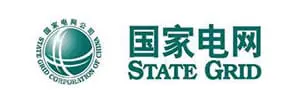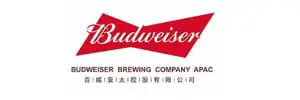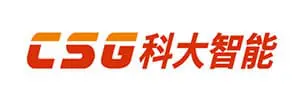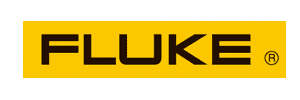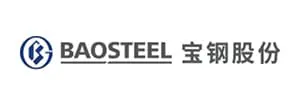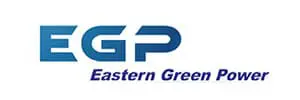DEEP Robotics Lite3
Agile Quadruped Robot for Education, Research & Entertainment
Compact, lightweight, and versatile, the DEEP Robotics Lite3 brings cutting-edge quadruped robotics into classrooms, labs, and everyday life. With modular hardware, open development tools, and AI-driven mobility, it enables students and researchers to experiment with robotics, create custom applications, and advance intelligent motion. Beyond academic and innovation settings, Lite 3 also serves as an engaging companion – an entertainment-focused robotic pet that combines fun with technology, making advanced robotics accessible for enthusiasts, hobbyists, and families alike.
DEEP Robotics powers missions for companies worldwide.
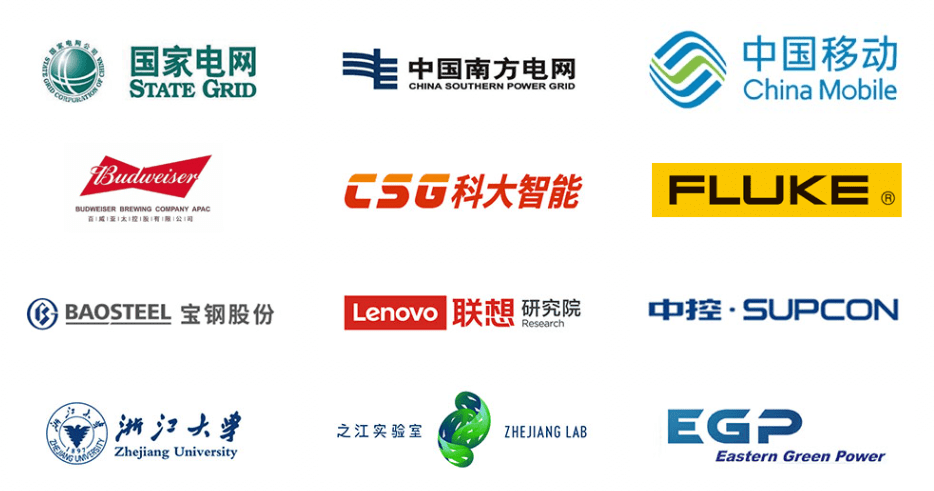
Extraordinary Mobility Meets Modular Design
The DEEP Robotics Lite 3 is an advanced, lightweight quadruped robotic platform tailored for education, research, and tech enthusiasts. It delivers enhanced joint torque (up 50%), faster response bandwidth, and precise motion control. This agile robot streamlines real‑time image transmission with low latency and supports endless expansion via modular components.
Enhanced Driving Force
With a 50% boost in joint torque, the DEEP Robotics Lite 3 achieves outstanding torque density, rapid response bandwidth, and high reverse transmission efficiency—translating into smoother, more precise movements across varied terrains. This performance upgrade enables the robot to execute complex maneuvers, maintain stability under dynamic loads, and respond instantly to control inputs. Whether navigating steep inclines, climbing obstacles, or performing agile demonstrations, the enhanced joint power gives educators, researchers, and developers a robust platform for exploring advanced robotics applications.

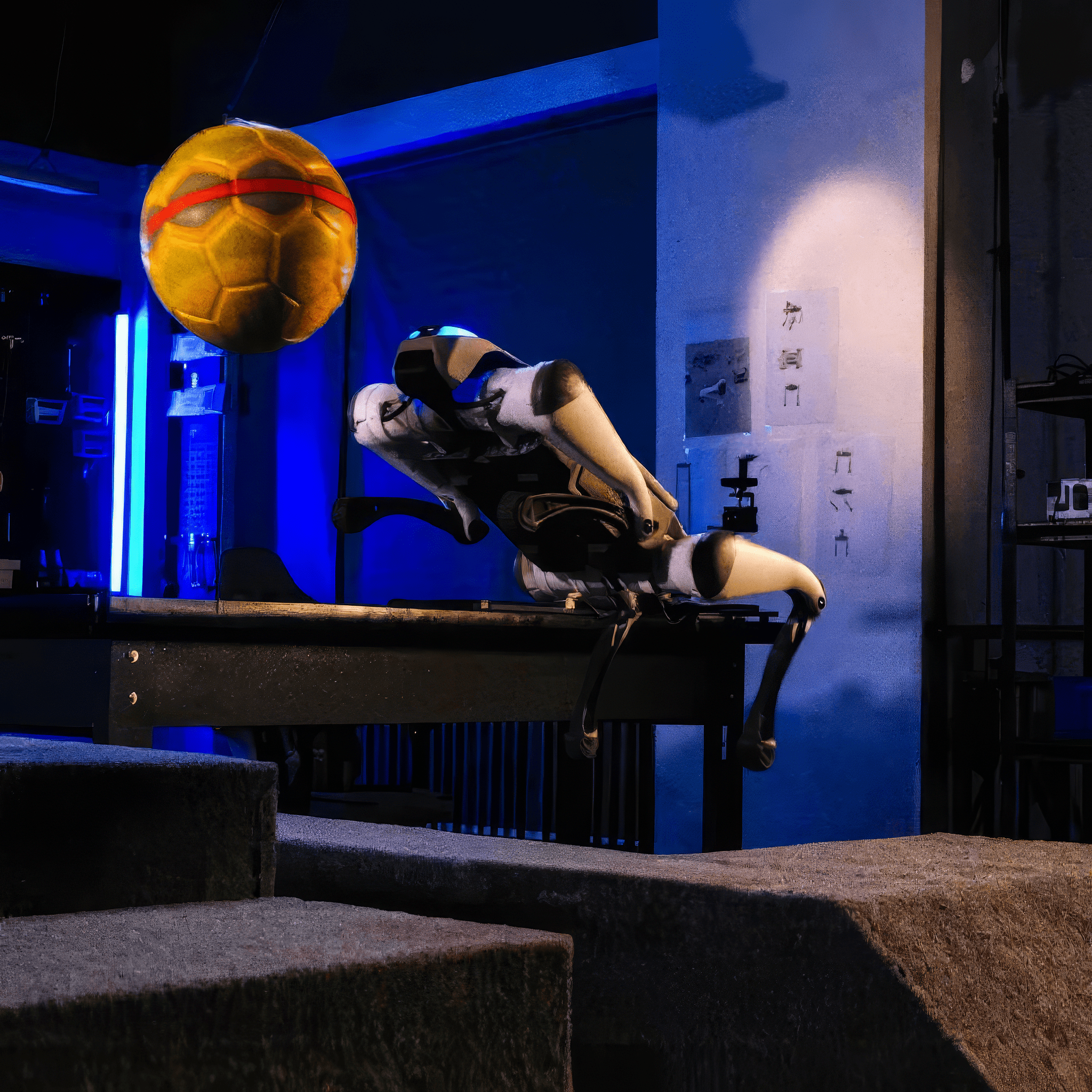
Advanced Algorithm
The DEEP Robotics Lite 3’s upgraded control algorithm delivers greater agility and faster response times, enabling smoother, more precise movement in both controlled and unpredictable environments. Enhanced motion planning and real-time adaptive control give it stronger pushing power, or “sumo” capability, allowing it to handle physical interactions and resistance with ease. Its improved maneuverability ensures stable performance when navigating tight spaces, avoiding obstacles, or executing complex gaits—making it an ideal platform for research, teaching, and robotics competitions that demand both speed and precision.
Enhanced Interaction
Significantly improves the real-time transmission quality of the first-person view, delivering clearer and smoother visuals. By reducing latency, it ensures faster feedback and more responsive control, allowing operators to experience a more immersive, precise, and reliable interaction with the robot during complex tasks.
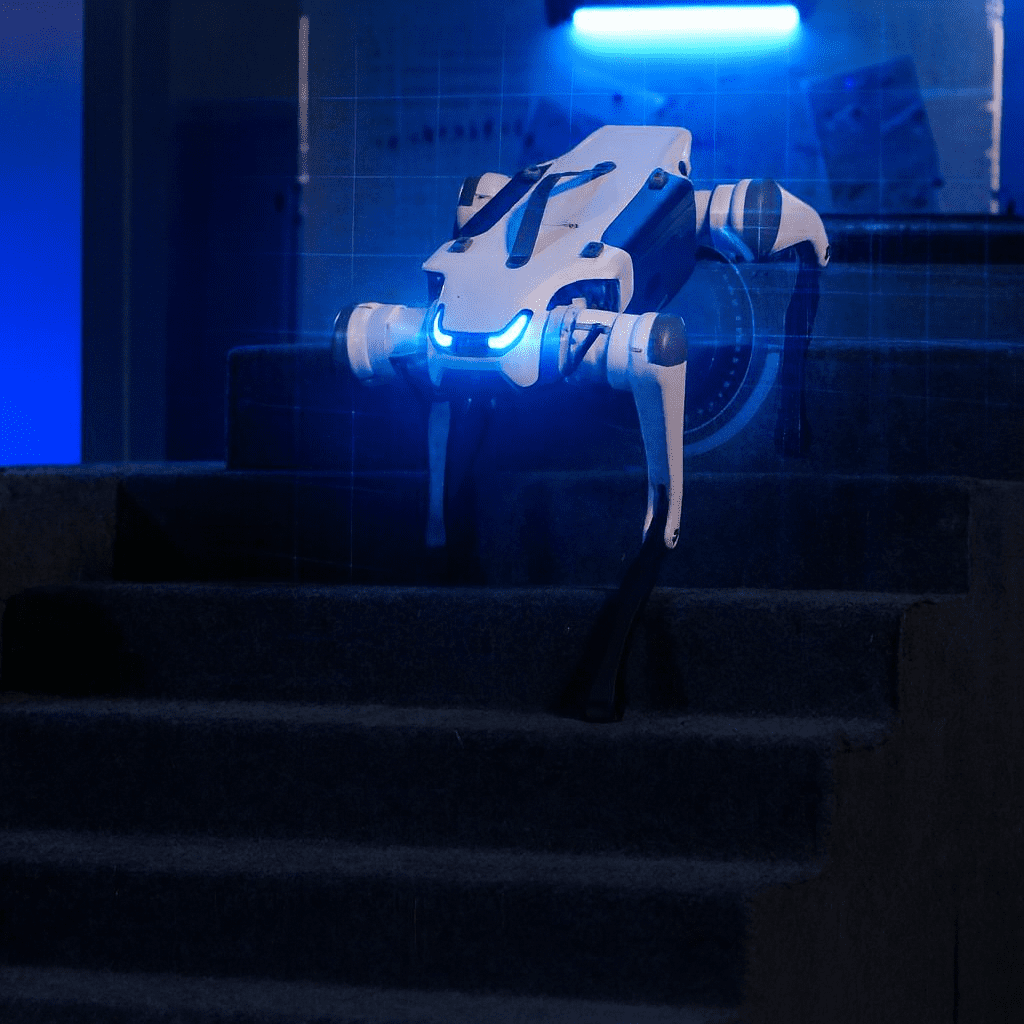
Modular Design for Unlimited Possibilities
Features an adaptable modular design that supports a wide range of additional functional modules, enabling endless customization possibilities. This flexibility allows the robot to be tailored for diverse applications, from research and education to industrial tasks, ensuring it can evolve with user needs and technological advancements.
DEEP Robotics Lite 3 Specification
Basic

Dimensions & Weight
- Standing Dimensions (L × W × H): 610 × 370 × 406 mm
- Weight: 12 kg
Performance
- Payload Capacity: 5 kg
- Maximum Slope: 40°
- Obstacle Clearance: 18 cm
Battery & Endurance
- Continuous Operation: 1.5 – 2 hours
- Maximum Range: 5 km
Perception Features
- Front/rear obstacle stop
- Visual following
Connectivity
-
Interfaces: N/A
Venture

Dimensions & Weight
- Standing Dimensions (L × W × H): 610 × 370 × 445 mm
- Weight: 12.2 kg
Performance
- Payload Capacity: 4.5 kg
- Maximum Slope: 40°
- Obstacle Clearance: 18 cm
Battery & Endurance
- Continuous Operation: 1.5 – 2 hours
- Maximum Range: 4 km
Perception Features
- Front/rear obstacle stop
- Visual following
Connectivity
-
Interfaces: Ethernet × 2; External Power Input (24V/12V/5V)
Pro
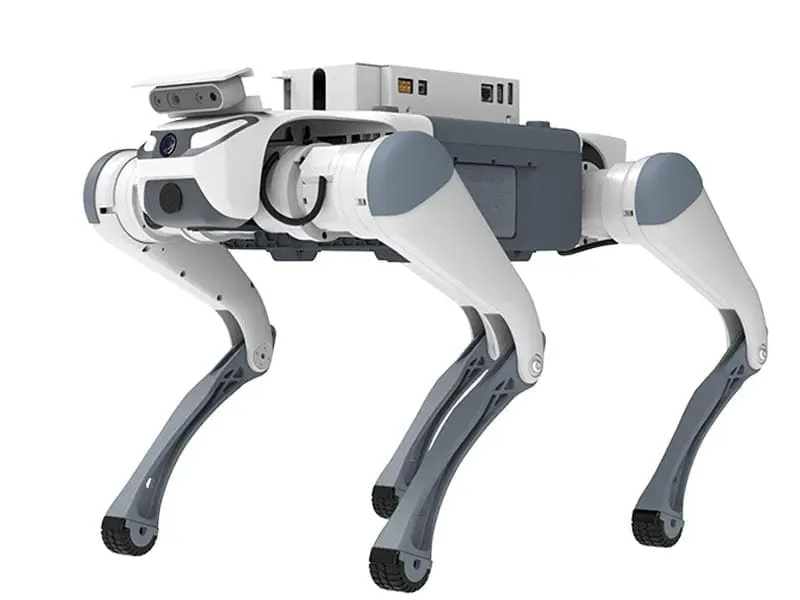
Dimensions & Weight
- Standing Dimensions (L × W × H): 610 × 370 × 450 mm
- Weight: 12.9 kg
Performance
- Payload Capacity: 4 kg
- Maximum Slope: 40°
- Obstacle Clearance: 18 cm
Battery & Endurance
- Continuous Operation: 1.5 – 2 hours
- Maximum Range: 3.4 km
Perception Features
- Front/rear obstacle stop
- Visual following
- Forward obstacle avoidance
Connectivity
-
Interfaces: USB 3.0, HDMI, Ethernet; External Power Input (24V/12V/5V); Power Connector
LIDAR
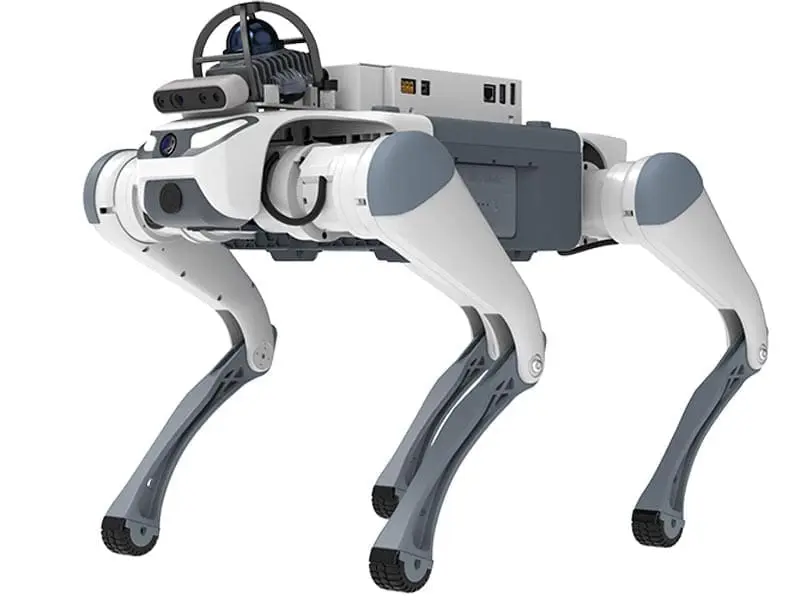
Dimensions & Weight
- Standing Dimensions (L × W × H): 610 × 370 × 496 mm
- Weight: 13.5 kg
Performance
- Payload Capacity: 2.5 kg
- Maximum Slope: 40°
- Obstacle Clearance: 18 cm
Battery & Endurance
- Continuous Operation: 1.5 – 2 hours
- Maximum Range: 2.7 km
Perception Features
- Front/rear obstacle stop
- Visual following
- Forward obstacle avoidance
- Autonomous navigation
Connectivity
-
Interfaces: USB 3.0, HDMI, Ethernet; External Power Input (24V/12V/5V); Power Connector
FAQs – DEEP Robotics Lite3
The DEEP Robotics Lite3 is a high-performance quadruped robot designed for academic research, reinforcement learning experiments, and robotics education.
It features open SDK and API access, allowing developers and researchers to perform secondary motion and perception development on both ROS1 and ROS2 platforms.
The Lite3 employs an RK3588 ARM-architecture processor for its motion host and an NVIDIA Jetson Xavier NX for its perception host (Pro/LiDAR versions).
This combination supports real-time control, AI-based perception, and multi-modal sensor fusion for applications like SLAM, autonomous navigation, and visual recognition.
The Lite3 supports Ubuntu 20.04 and is compatible with both ROS1 (Noetic) and ROS2 (Foxy) environments.
Users can switch between ROS1 and ROS2 via built-in scripts to suit their research requirements.
This makes it ideal for projects involving reinforcement learning, locomotion control, and robot autonomy.
The Motion SDK allows researchers to control individual joints, develop custom gait algorithms, and test new locomotion models.
It provides access to data from each joint, including torque, velocity, and position feedback, enabling precise gait tuning for reinforcement learning and model-based control studies.
Example code and libraries are available on the Lite3 Motion SDK GitHub repository.
The Perception Development Manual provides detailed examples for LiDAR-based SLAM, navigation, and obstacle avoidance using faster-LIO and hdl_graph_slam frameworks.
Lite3 integrates an Intel RealSense D435i depth camera and optional Livox or Leishen LiDAR modules for 3D mapping, localization, and environmental reconstruction.
Sample projects and ROS packages can be found on DEEP Robotics’ GitHub pages, including:
Yes. The DEEP Robotics Lite3 supports reinforcement learning environments through the official GitHub repository Lite3_rl_deploy.
Researchers can train and deploy locomotion policies directly on the robot, bridging simulation-to-real (sim-to-real) learning for legged locomotion.
This enables experiments in policy transfer, domain randomization, and adaptive terrain locomotion.
Depending on the model configuration (Basic / Venture / Pro / LiDAR), Lite3 supports:
-
Front/Rear obstacle detection and stop
-
Visual following and recognition-based tracking (YOLOv8 + TensorRT)
-
Forward obstacle avoidance and autonomous navigation (SLAM)
-
People tracking and AI-based interaction
These functions can be customized or expanded via the perception SDK.
Lite3 includes multiple protection systems to ensure safety during high-dynamic motion:
-
Overtemperature protection: automatically stops and lies down if motors overheat.
-
Fall-down protection: increases joint damping and stops motion to prevent impact.
-
Motion logs: event and operation data are saved for diagnostic analysis.
The robot supports multiple hardware and software interfaces for secondary development:
-
Ethernet ×2, USB 3.0, HDMI, and External power input (24V / 12V / 5V) – depending on models
-
UDP-based data exchange between motion and perception hosts
-
Full compatibility with ROS topics, including
/cmd_vel,/imu/data, and/joint_states
| Model | Key Features | Perception | Load Capacity | Endurance |
|---|---|---|---|---|
| Lite3 Basic | Entry model for algorithm testing and education | Visual following, obstacle stop | 5 kg | ~5 km |
| Lite3 Venture | Extended version with additional I/O interfaces | Visual following, obstacle stop | 4.5 kg | ~4 km |
| Lite3 Pro | Enhanced compute and perception host | Forward obstacle avoidance | 4 kg | ~3.4 km |
| Lite3 LiDAR | Equipped with LiDAR for autonomous navigation | Auto navigation | 2.5 kg | ~2.7 km |
Comprehensive manuals are provided for Motion Development and Perception Development, including example source code, ROS packages, and SDK usage guides.
All official resources can be accessed via:

